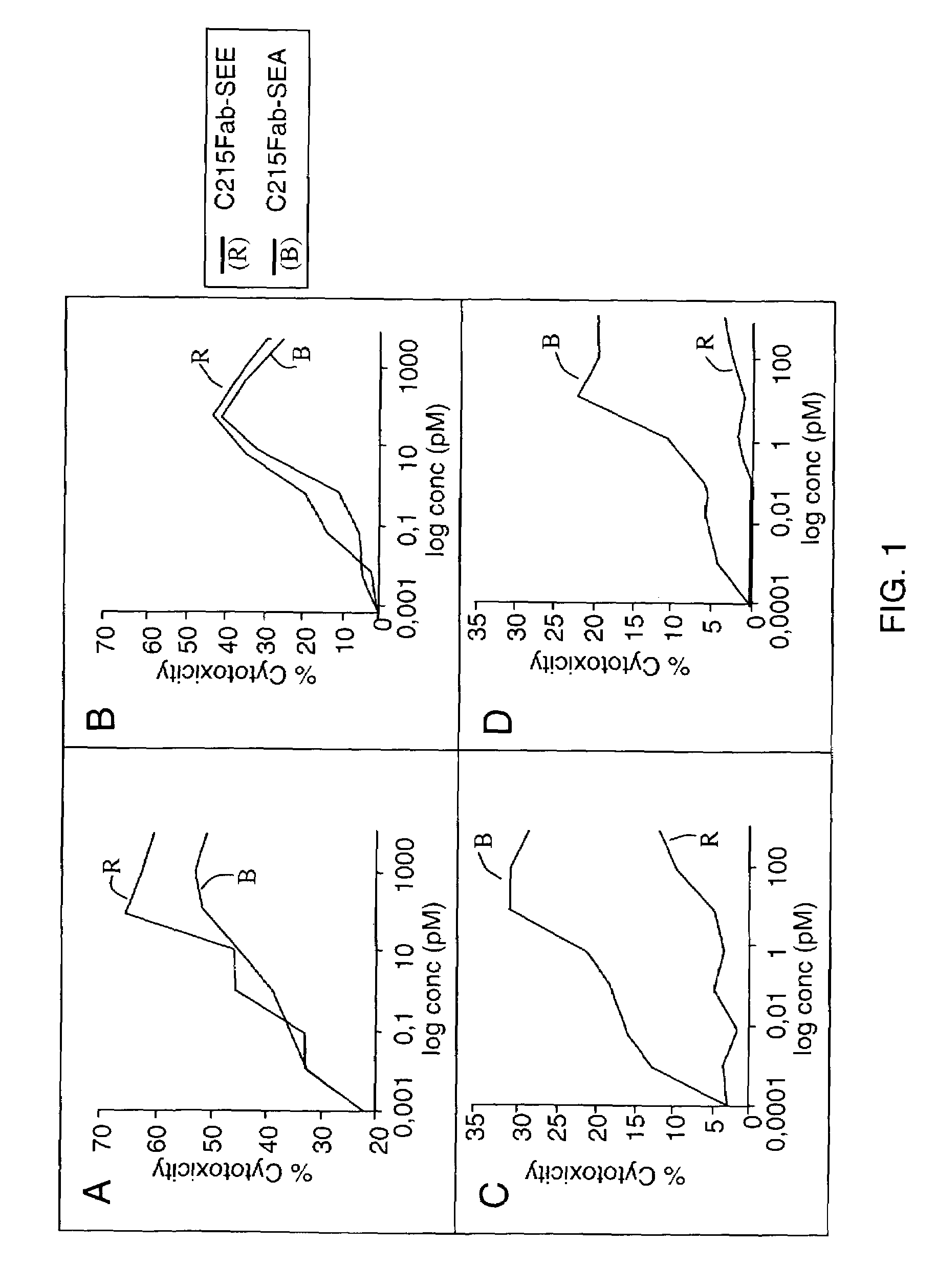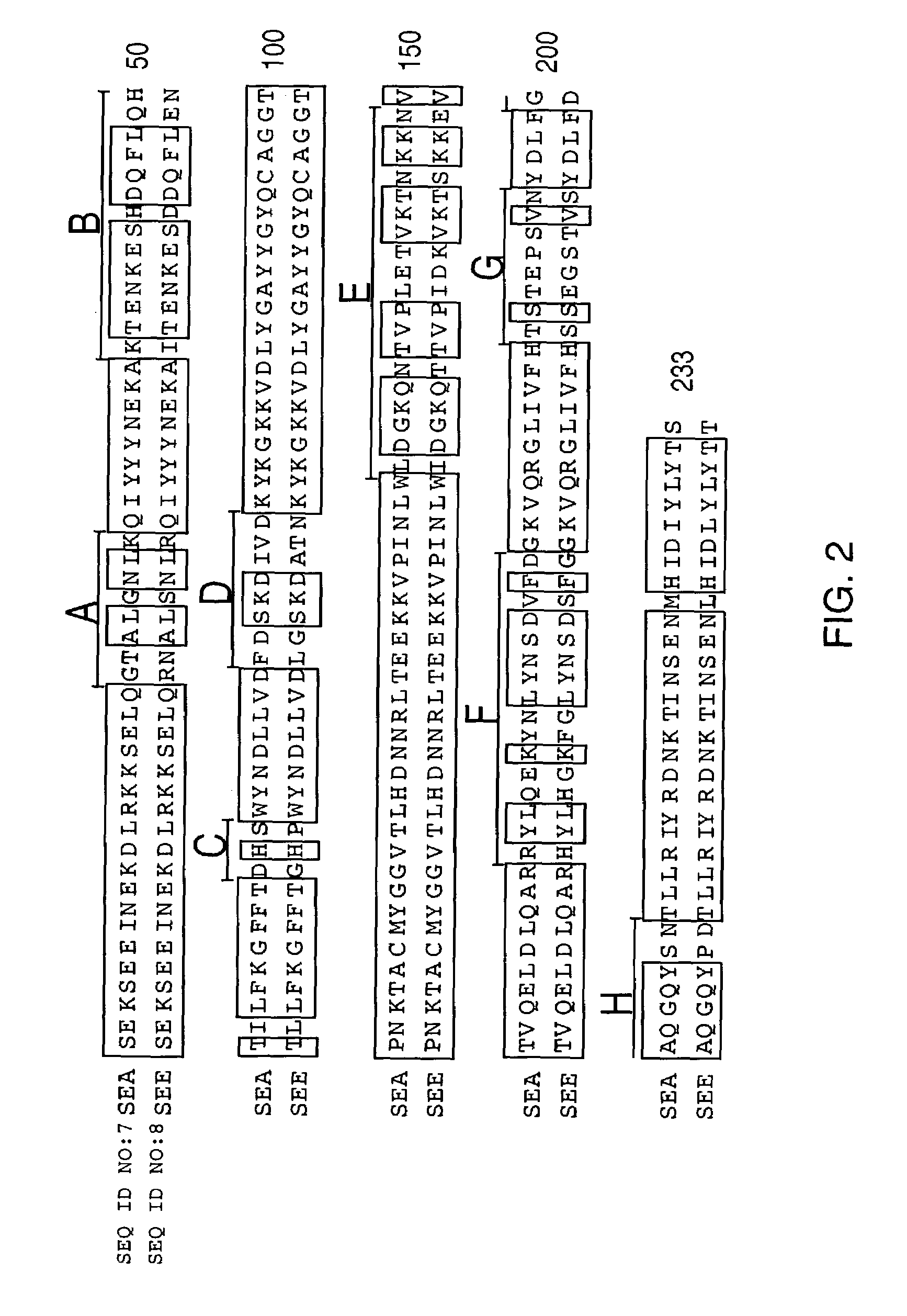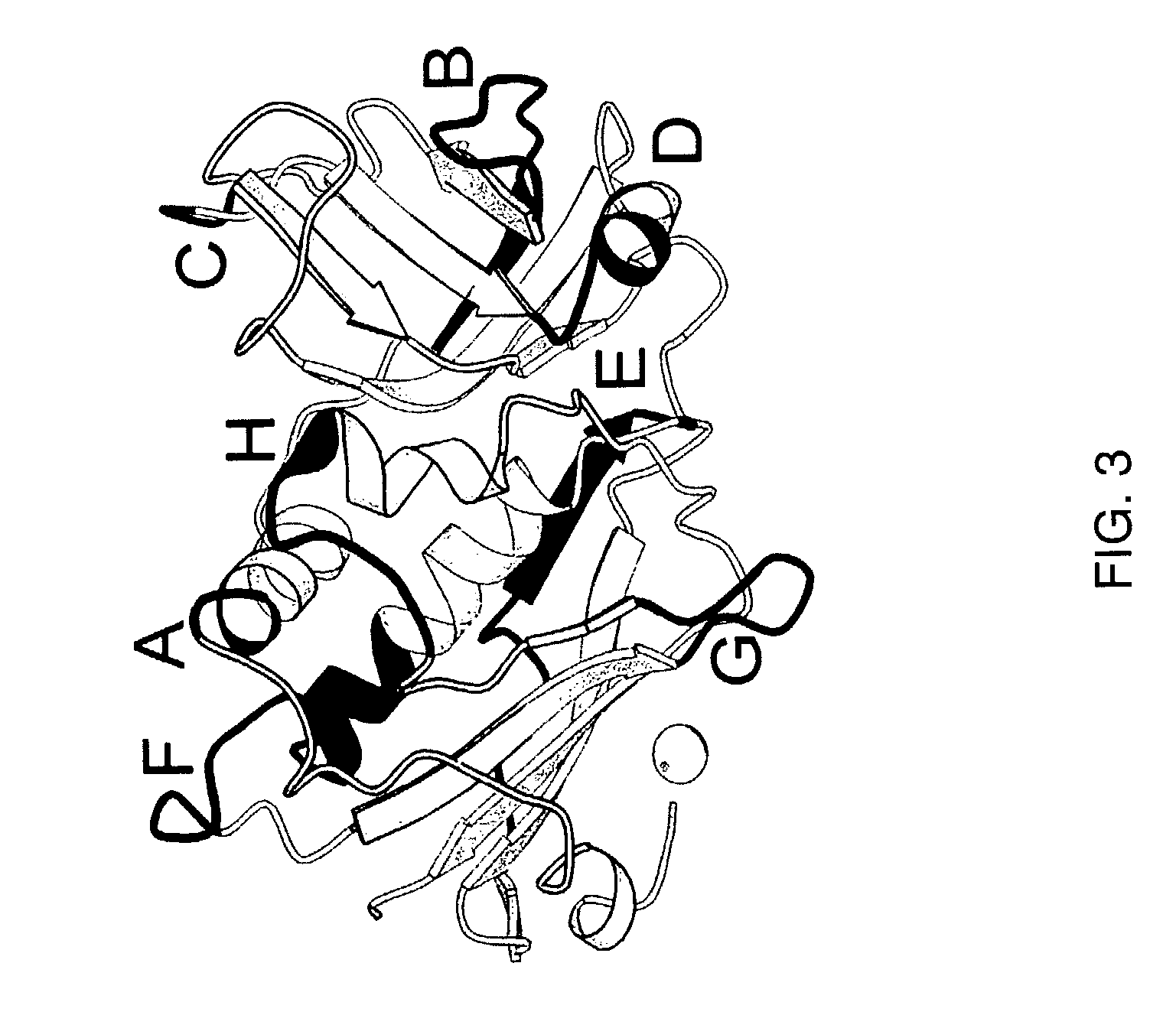Modified Chimeric superantigens and their use
- Summary
- Abstract
- Description
- Claims
- Application Information
AI Technical Summary
Benefits of technology
Problems solved by technology
Method used
Image
Examples
Embodiment Construction
[0030]The first aspect of the invention is a method for the treatment of a disease in a mammal by activation of its immune system through administration of a therapeutically effective (immune activating) amount of a modified, preferably chimeric, superantigen. The mammal is preferably a human. The diseases in question are mostly associated with cells expressing on their surface a target structure binding to the superantigen. The target structure is in most cases different from the TCR epitope normally binding to superantigens. Binding to the target structure permits also binding to TCR and T cell activation. Illustrative examples are MHC class II antigens and other cell surface structures that may be expressed on cells associated with the courses of diseases. Illustrative diseases are cancers (such as carcinoma, sarcoma, and melanoma), viral infections, parasitic infestations and autoimmune diseases. The cells expressing the target structure may also be cells that in some way contro...
PUM
| Property | Measurement | Unit |
|---|---|---|
| Therapeutic | aaaaa | aaaaa |
Abstract
Description
Claims
Application Information
 Login to View More
Login to View More - R&D
- Intellectual Property
- Life Sciences
- Materials
- Tech Scout
- Unparalleled Data Quality
- Higher Quality Content
- 60% Fewer Hallucinations
Browse by: Latest US Patents, China's latest patents, Technical Efficacy Thesaurus, Application Domain, Technology Topic, Popular Technical Reports.
© 2025 PatSnap. All rights reserved.Legal|Privacy policy|Modern Slavery Act Transparency Statement|Sitemap|About US| Contact US: help@patsnap.com



